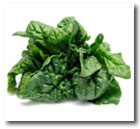|
Supertasting describes the ability to strongly detect food flavors such as bitter and sweet, and it can affect a person's food preferences. For example, supertasters are often averse to green vegetables because their bitter taste is amplified. Supertasters may also prefer foods lower in sugar and fat. Approximately one out of four people is a supertaster, and a supertaster's avoidance of sweet and fatty foods may have protective cardiovascular
effects.

Christopher Nosrat and colleagues at the University of Tennessee Health Science Center and the Monell Chemical Senses Center in Pennsylvania have developed a new mouse model that may be useful to study supertasting. The team's work was reported in the Journal of Biological
Chemistry.
Nosrat's group developed mice whose taste buds overexpress brain-derived neurotrophic factor, a growth factor for neurons and a protein that is important for the distribution of nerves to sensory organs, such as taste buds.
These mice had larger taste buds, an increased number of taste cells per taste bud, and a greater supply of nerves in the taste buds compared with the control mice. These features suggest that the mice could be a model for supertasters, whose tongues have an increased number of fungiform taste buds (a specific kind of taste bud on the front and sides of the tongue that detects the five basic
tastes).
"By generating the supertaster rodent model," Nosrat reports, "we are able to study the supertasting phenomenon in detail." Furthermore, brain-derived neurotrophic factor is important for proper development of the nervous system, Nosrat explains, and this mouse model can facilitate the development of therapies for nerve injuries in which taste signaling to the brain has been
damaged.
For more information
The article: "Targeted taste cell-specific overexpression of brain-derived neurotrophic factor in adult taste buds elevates phosphorylated TrkB protein levels in taste cells, increases taste bud size, and promotes gustatory innervation" by Irina V. Nosrat, Robert F. Margolskee, and Christopher A. Nosrat.
http://www.jbc.org/content/287/20/16791
American Society for Biochemistry and Molecular Biology
( MDN )
|